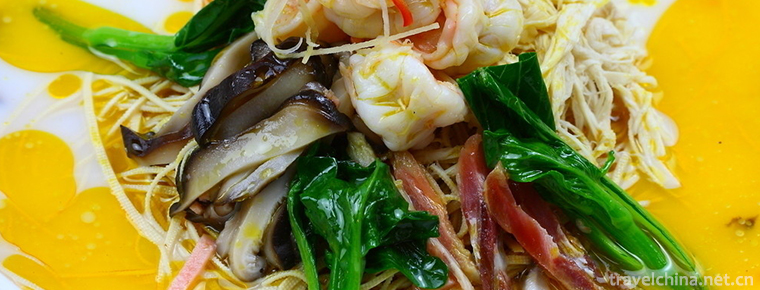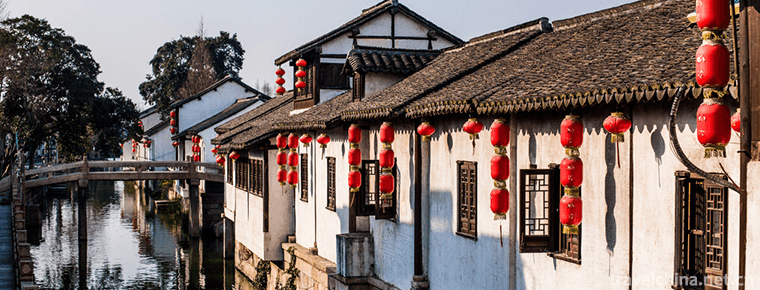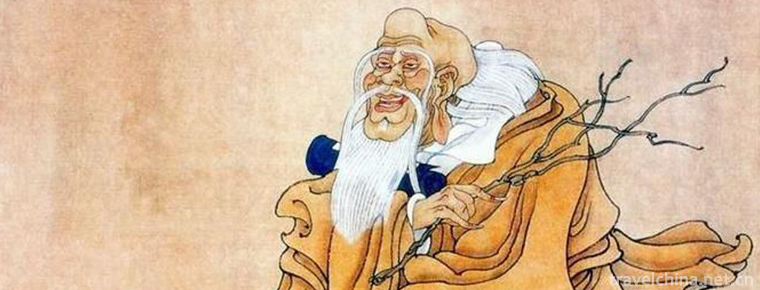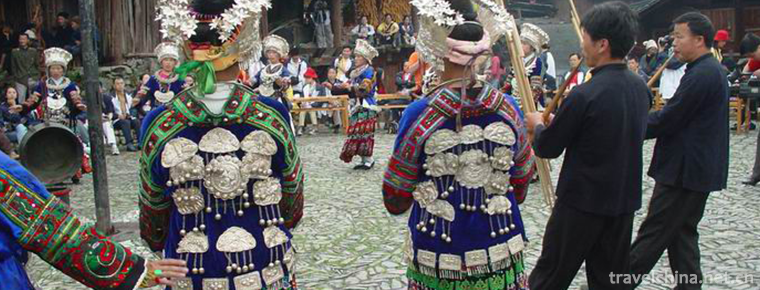Shaanxi History Museum
Shaanxi History Museum
Shaanxi History Museum, China's first large-scale modern national museum, the first batch of China's "AAAA" class tourist attractions, known as the "ancient capital pearl, treasure house of China". Located at No. 91 Xiaozhai East Road, Yanta District, Xi'an City, Shaanxi Province, northwest side of Dayan Pagoda. Among the 17171795,000 cultural relics (groups) , there are 762 first-class cultural relics (groups) and 18 national treasure-level cultural relics (groups), of which 2 are among the first batches of cultural relics prohibited from going abroad for exhibition, ranking in the forefront of the Chinese Museum.
The appearance of Shaanxi History Museum highlights the style of the flourishing Tang Dynasty. Since the ancient imperial capital of Chang'an, thirteen feudal dynasties, including Zhou, Qin, Han, Sui and Tang dynasties, have built the capital here. They have abundant cultural relics on the ground and underground, forming the unique historical and cultural features of Shaanxi.
Shaanxi History Museum, formerly known as Shaanxi History Museum founded in June, 1944, was renamed Northwest History Exhibition Museum in 1950, Northwest History Museum in 1952 and Shaanxi Museum in June 1955. In 1983, according to Premier Zhou Enlai's instructions before his death, he began to prepare for the construction of a new pavilion at the site. In the summer of 1986, construction began. On June 20, 1991, it was officially opened and named as . In 2016, Shaanxi Museum of History was selected as "China's 20th Century Architectural Heritage" by the Chinese Society of Cultural Relics and the Chinese Society of Architecture. In December 2017, it was selected as the first batch of national practical education bases for primary and secondary school students by the Ministry of Education.
In 2008, Shaanxi Museum of History was awarded the first-class national museum, and in 2009 it was designated as the national key Museum jointly built by the central and local governments. The library area covers 65,000 square meters. The building area is 556,000 square meters, the cultural relics reservoir area is 8,000 square meters, and the exhibition hall area is 11,000 square meters. The collection of cultural relics began with simple stone tools used in the initial stage of ancient human beings and lasted for more than one million years until 1840. Cultural relics are not only of great quantity and variety, but also of high quality and wide value.
History of Development
The predecessor of Shaanxi History Museum is Shaanxi History Museum.
In June 1944, the Shaanxi Provincial Government established the Shaanxi Provincial History Museum by utilizing the historical relics collected by Xi'an Stele Forest and Xijing Library, the craft exhibits of Xi'an Folk Religion Museum and various cultural relics collected by the former archaeological association.
On May 20, 1949, Xi'an was liberated. The Shaanxi History Museum was accepted by the Shaanxi-Gansu-Ningxia Border Region Government.
In May 1950, it belonged to the management of Northwest China and was renamed the Northwest Historical Relics Exhibition Hall.
In January 1952, it was renamed the Northwest History Museum.
In March 1953, the Northwest History Museum demolished the partition between the stele forest and the Confucius Temple, formally expanding the Confucius Temple into the museum area.
In June 1955, due to the revocation of Northwest China, the Northwest History Museum was under the management of the Shaanxi Provincial Government, and its name was changed to Shaanxi Provincial Museum.
In 1963, the newly built Xi'an Stone Carving Art Room of Shaanxi Museum was officially opened to the outside world. Since then, historical exhibition, sculpture art and stele forest have become the three permanent exhibitions of Shaanxi Museum. With the development of Shaanxi cultural relics and archaeology, by the 1970s, the collection of cultural relics in Shaanxi Museum had reached hundreds of thousands.
When Premier Zhou Enlai visited Shaanxi in 1973, he was impressed by the rich cultural resources in Shaanxi and the small and crude condition of the existing museums. He proposed that a new museum should be built in Shaanxi.
In 1983, the Shaanxi History Museum was built, which is a key construction project of the National Seventh Five-Year Plan. In view of Shaanxi's position in Chinese history, the state and Shaanxi provincial government jointly invested 144 million yuan to build Shaanxi History Museum. The design of Shaanxi History Museum is performed by Ms. Zhang Jinqiu, academician of Chinese Academy of Engineering and famous architect.
On the morning of June 20, 1991, the opening ceremony of Shaanxi History Museum was solemnly held in the front courtyard of the exhibition hall. Shaanxi History Museum, the first national-level large-scale modern museum in China, was officially completed and opened. Its completion marks a new development milestone for the cause of Chinese museums . Basic Exhibition of Shaanxi Local History, Exhibition of Tang Tomb Frescoes and Exhibition of Zhaoling Cultural Relics are also on display.
architectural composition
The appearance of Shaanxi History Museum highlights the style of prosperous Tang Dynasty. The building is composed of a group of buildings with imitative Tang style, such as stele pool, main hall, reservoir area, southeast corner building, southwest corner building, temporary exhibition hall, administrative room and business room.
Shaanxi History Museum is located at Cuihua intersection of Xiaozhai East Road in Xi'an City. Its advantage is that it is neat in place, surrounded by roads, located at the intersection of urban trunk road, close to the city center and convenient in transportation. At the same time, it is only about 1 kilometer away from Qujiang Scenic Spot of Dayan Pagoda. It has a good line of sight with Daxiao Yan Pagoda on urban tourism routes, especially because there is no relocation on this land. Business, nearby main roads have urban pipeline network facilities, easy to start the project. But its disadvantage is that the land is a little limited and there is little room for development. As a large public building, it lacks public square or public green space. According to the above site conditions and the functional requirements of modern museums, the buildings of Shanxi Libo have adopted a relatively centralized and compact layout.
Museum architecture as a whole fully embodies the design idea of Zhang Jinqiu, a master of design, "to reach the international level in technology, and to become a symbol of a long history and splendid culture in architectural art", which intentionally highlights the style of the flourishing Tang Dynasty and reflects the style of the magnificent Tang Dynasty. The layout design draws lessons from the characteristics of Chinese palace buildings such as axis pairing, master-slave orderly, central palace and four corners of lofty buildings. The whole building has distinct primary and secondary features, scattered and gathered, highlighting the simple and dignified style, creating an atmosphere of combining ancient imperial palaces with traditional gardens, reproducing the style of integrating traditional culture with modern science and technology, showing the spatial composition characteristics of traditional Chinese palace buildings such as "Taiji Center, all directions" and "beyond the image" which has been hidden in Chinese space consciousness for thousands of years. From the Oriental Universe Philosophy of "Atlas".
In 2016, Shaanxi Museum of History was selected as "China's 20th Century Architectural Heritage" by the Chinese Society of Cultural Relics and the Chinese Society of Architecture.
Honors
In the "Hong Bo Award 2014 Chinese Museum Literary Creation Product Selection Activity" sponsored by the Chinese Museum Association and sponsored by the Chinese Museum Association's Professional Committee of Literary Creation Products, Shaanxi Museum of History selected the work "Tang Baitao Horse Dance U Disk" and won the "Hong Bo Award 2014 Top 10 Literary Creation Products Award of the Chinese Museum", "Yangshao (Banpo) Cultural Derivation-Fashion Series" and garment jewelry Group. "National Museum Cultural Products Creative Design Promotion Activity" Gold Award, "Tangniu Series Cultural Products" won the bronze award of household appliances group.
In November 2017, Shaanxi History Museum won the honorary title of the fifth National Civilization Unit.
In December 2017, it was selected as the first batch of practical education bases and camps for primary and secondary school students in China by the Ministry of Education.
Cultural Activity
On June 23, 2015, Shaanxi Libo held the education activity of "Duanqing Dragon Boat Festival with realgar and incense sachet hanging on the wrist"
On June 15, 2015, Shaanxi Libo Mobile Museum entered Hanzhong
On March 24, 2015, the Museum held a large-scale sacrificial ceremony for the Spring Equinox Asahi.
On March 4, 2015, the Museum held the educational activity of "Shangyuan Lantern Control Flower Lantern"
On November 9, 2015, the Museum held an educational activity called "Happy Chinese Characters"
June 16, 2014, Cultural Heritage Daily Shanxi Calendar Expo held "Cultural Relics on the tip of the tongue" educational experience activities
On June 13, 2014, "Shaanxi-Bo Mobile Museum" entered Xumiao Junior Middle School in Lantian County
On March 31, 2014, Shaanbo held a successful movable-type printing event entitled "Ancient Inventions Hidden in Museums"
On May 18, 2017, the first national exhibition of movable cultural relics census achievements in Shaanxi Province was officially launched in Shaanxi History Museum. More than 200 exquisite cultural relics from one demonstration area in 10 cities and 66 state-owned collecting units of Shaanxi Province appeared collectively. This is also a collective review of the results of the first national survey of movable cultural relics in Shaanxi Province, which lasted five years. Shaanxi Province has registered a total of 300,9495 sets of 774,870 movable cultural relics, ranking second in the country in total.
Visiting information
Geographical location:
Shaanxi History Museum is located at 91 Xiaozhai East Road, Yanta District, Xi'an City, Shaanxi Province (northwest side of Dayan Pagoda)
Opening Hours:
Open all day from Tuesday to Sunday and close all day on Monday (except national holidays)
Winter: November 15-March 15 9:00-17:30 (16:00 stop invoice)
Summer: March 16-November 14, 8:30-18:00 (16:30 stop invoice)
Admission ticket:
Free ticket exchange with ID card
Traffic:
Take bus No. 5, 19, 24, 26, 27, 30, 34, 401, 521, 527, 610, 701, 710, You6 and You8 to get off at Cuihua Road (Shaanxi Museum of History).
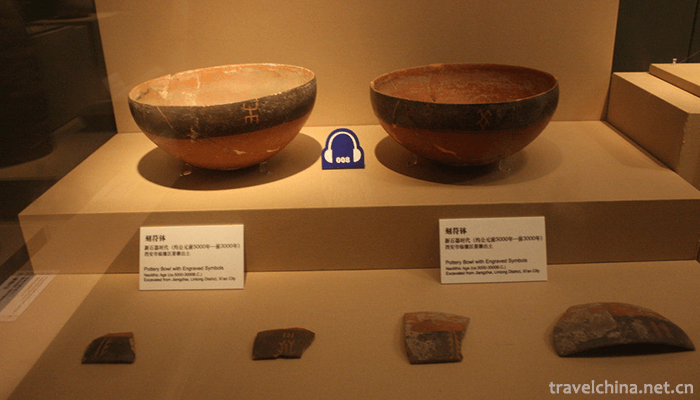
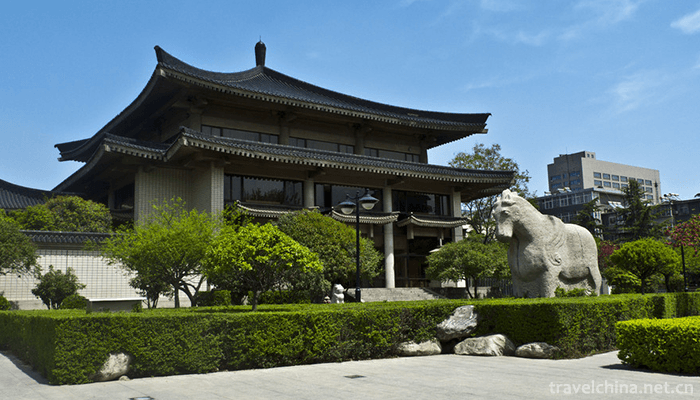
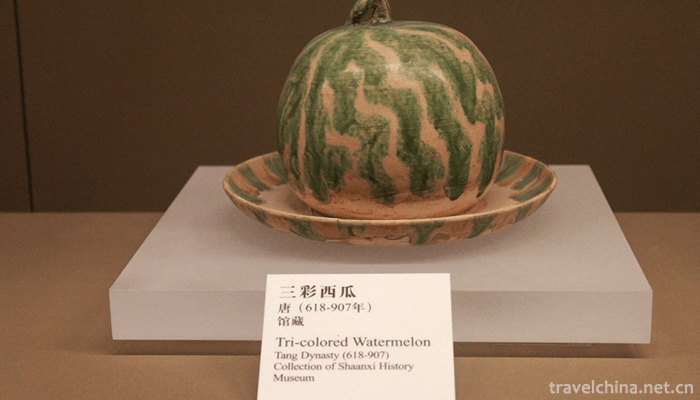
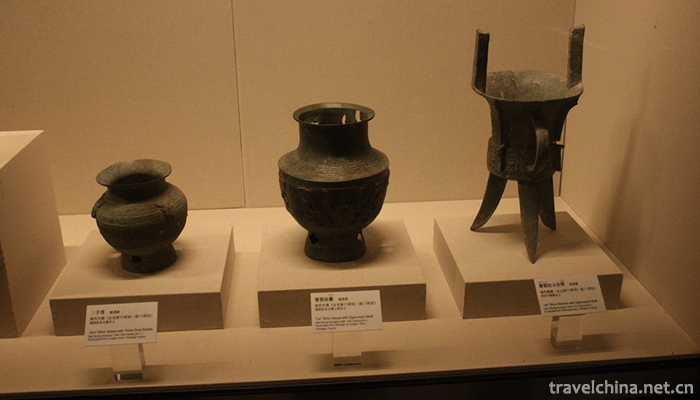
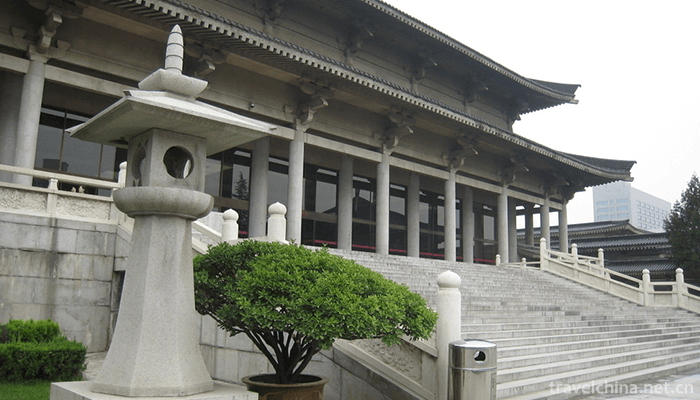
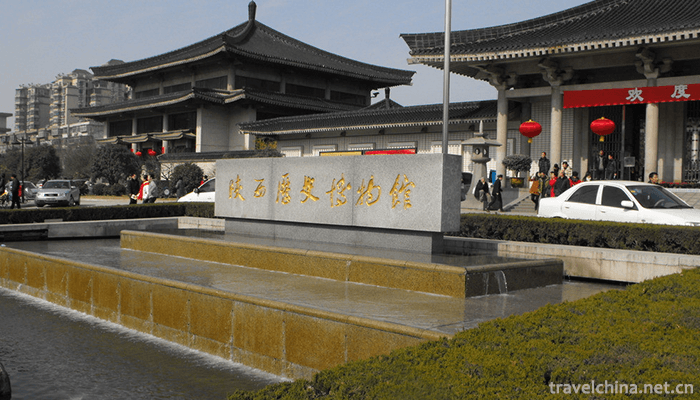
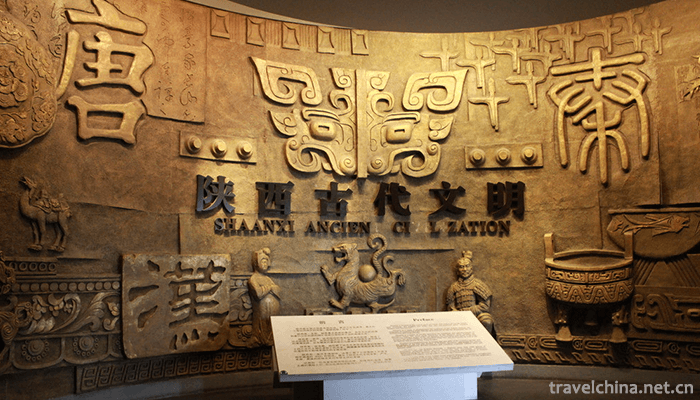
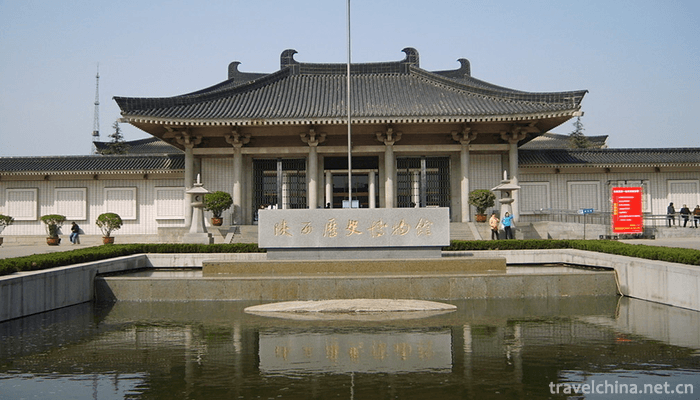
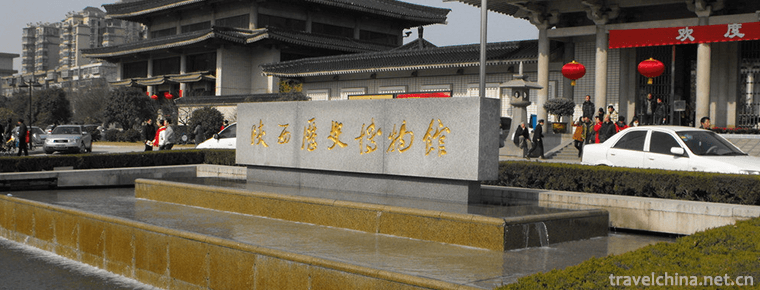
Shaanxi History Museum
-
Braised Shredded Chicken with Ham and Dried Tofu
Braised Shredded Chicken with Ham and Dried Tofu, also known as chicken juice, boiled silk, the traditional dishes are Huaiyang cuisine
Views: 225 Time 2018-10-27 -
Yin and yang
There are three characteristics of yin yang philosophy: unity, opposition and interaction. In thinking, it is an inseparable node of arithmetic and divination.
Views: 388 Time 2018-11-13 -
fengjing ancient town
Fengjing Ancient Town, which belongs to Jinshan District of Shanghai, is located in the southwest of Shanghai and borders five districts and counties of Shanghai and Zhejiang. It is the most important
Views: 133 Time 2019-01-12 -
Tianzhu Mountain National Forest Park
Tianzhushan National Forest Park, a national 4A-level tourist attraction, is located in Tianzhushan Town, 30 kilometers southeast of Shanyang County Town, Shaanxi Province, south of Huling and north o
Views: 186 Time 2019-02-22 -
Iron Coal Steam Locomotive Museum
Tiaobingshan Steam Locomotive Museum, formerly known as Iron Coal Steam Locomotive Museum. National AAAA-level scenic spots and national industrial tourism demonstration sites
Views: 230 Time 2019-02-22 -
Laozi legend
Laozi is the incarnation of Laojun. The fifteenth day of February in the lunar calendar is a major Daoist festival. It is the "Christmas" of the emperor. Lao Tzu, the word Boyang
Views: 238 Time 2019-05-11 -
Bronze drum dance
Tonggu dance is one of the most popular and influential ancient dances among the Zhuang and Yi people in Wenshan Zhuang and Miao Autonomous Prefecture of Yunnan Province. It is distributed in Zhuang a
Views: 109 Time 2019-06-21 -
Chongzhou jiulonggou scenic spot
Chongzhou jiulonggou scenic spot is located in Sanlang Town, Chongzhou City, with an area of more than 170 square kilometers and 76 kilometers away from Chengdu City. Jiulonggou is known as "Dragon Palace on earth".
Views: 338 Time 2020-11-05 -
Chinese Cheongsam QiPao start time
When it comes to the beginning of cheongsam fashion, it is generally believed that in the period of the Republic of China in the 20th century, Mr. Zheng Yimei said that "the original women wore short clothes in the Qing Dynasty, but did not wear
Views: 381 Time 2020-12-11 -
Public education in Chengdu Giant Panda Base
From 2003 to 2016, Chengdu base received more than 100000 primary and secondary school students at home and abroad, and trained more than 800 volunteers; went to colleges and universities, communities, primary and secondary schools, kindergartens and nature
Views: 368 Time 2020-12-13 -
Animal resources in Leshan
The composition of the wild fauna in Leshan City is located in the transitional zone between the Palaearctic realm and the Oriental realm. It is mainly composed of the southwest region and central China region of the Sino Indian subregion in the Oriental realm.
Views: 351 Time 2020-12-17 -
Guangan scenic spot
By 2018, there are 24 A-level scenic spots in Guang'an City, of which Deng Xiaoping's hometown is a national 5A scenic spot, and six scenic spots, including Huaying Mountain tourist area, Shenlong mountain Ba Ren stone city, baozhensai, Tianyi Vall
Views: 351 Time 2020-12-19
